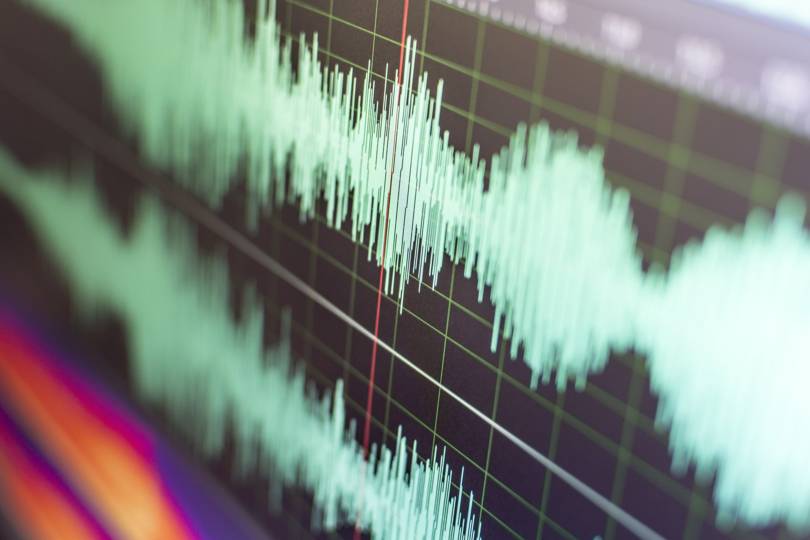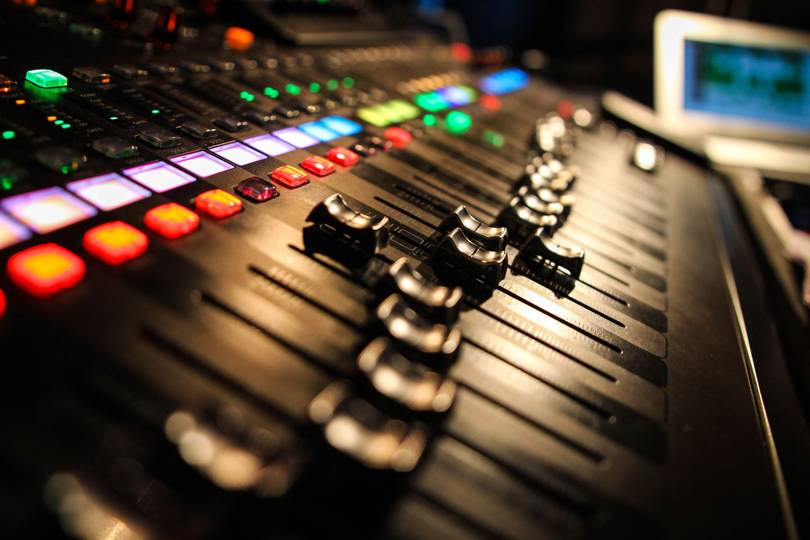

Music, in itself, isn’t always something that can be explained. It’s something to be experienced; something to be felt. But the technology behind the sound is a different ballgame, loaded with acronyms, jargon and technical language. WIRED is here to help, with a guide to the audio terms you need to know.
Analogue
Analogue can mean numerous things across science and technology, but from an audio perspective it refers to the recording of music and is used to differentiate analogue mediums from the more modern, digital ones.
Sound in its most natural form is an analogue signal – a continuous wave with no breaks or interruptions (unlike digital). When you make an analogue recording, typically on to tape or vinyl, it uses a method that physically imprints this signal directly onto that medium. In the case of vinyl, this is done by creating grooves in a record; with tape, it’s created by the magnetisation of the tape’s particles into a particular pattern.
As these methods capture the signal in its truest form, analogue is often considered to be a more faithful representation of the original sound, although with advanced such as high-resolution files digital is coming much closer these days.
Bit depth

When you see a piece of music described as 16-, 24- or 32-bit, this is referring to the bit depth and, alongside sample rate, is a key part of digital music. In its simplest form, it’s an indication to how accurately the analogue sound is encoded in digital form. The higher the bit depth, the more accurate the sound.
Looking a little deeper, bit depth basically determines how much rounding off has to be done to a waveform when getting the on-off digital signal (see Digital) as close as possible to the continuous analogue one.
To think of it in easier terms, let’s imagine analogue has £8.71 in its pocket. A low bit-depth digital recording might suggest this to be £5. A higher bit depth would get closer at £8, and higher still might come in at £8.50. The more bits there are to play with, the closer to the original signal you get, which has a direct impact on dynamic range (see also Sample rate).
Bitrate
While bit depth is used to describe lossless PCM files, bitrate is used to convey the quality of compressed audio formats like MP3. It is usually measured in kilobits per second (kbps).
In technical terms, bitrate is the amount of data an audio file contains per second. The higher this number, the better quality the digital file or stream is.
If you were to break CD quality audio down to its bitrate, it would be 1,411kbps. Compare that with iTunes downloads of 256kbps and Spotify Premium streams of 320kbps, and you can see how much more compressed these formats are.
Bluetooth is a wireless technology that allows devices to share data over short distances, currently of up to around 10 metres for the majority of uses. With audio, this usually involves sending a piece of music from a source device, like a phone or tablet, to something like a wireless speaker or wireless headphones.
Due to its Scandinavian roots, the technology is named after a 10th century Danish Viking, King Harald Blåtand (which translates to Bluetooth in English).
Digital music is recorded by converting the original analogue signal into a sequence of numbers (as 1s and 0s). This digital representation can then be interpreted by digital equipment and played back as music.
The difference is that while analogue is a continuous signal (as discussed above), a digital signal is either on or off. This means a digital recording is actually lots of snapshots of sound that roughly follow the same path as the original analogue wave.

Imagine it like this. When we see something in real life, it’s a continuous flow of movement from start to finish. That’s like analogue. Digital, on the other hand, is like watching a movie of the same thing, which uses thousands of stills fired in quick succession to mimic what we saw. This is just how digital music works, and the better quality the recording, the more frames to the film there are (see Sample rate for more).
Digital music formats include physical mediums like CD, but also digital files like MP3 and FLAC that are usually streamed or downloaded.
In audio, dynamic range is the difference between the loudest possible part of a sound, and its softest. Measured in decibels (dB), it is directly related to bit depth. For every extra level of bit depth a piece of music contains, you add 6dB of dynamic range, and the more dynamic range there is, the more of the sound you’re hearing.
This means a CD encoded at 16 bits will have a dynamic range of 96dB. MP3 files, on the other hand, are known to have their dynamic range actively compressed to make smaller files. The dynamic range of human hearing maxes out at about 120dB.
PCM stands for Pulse Code Modulation, characterised by bit depth and sample rate. It is the means by which an analogue audio signal is most accurately approximated and encoded into a digital one. Most lossless files are PCM files, including FLAC, ALAC, WAV and AIFF.

Sample rate typically accompanies bit depth in describing the quality of a lossless audio file. It is measured in kilohertz (kHz) and is used to describe the number of times an analogue signal is sampled per second in its conversion to a digital file. For example, in a CD-quality track at 16-bit/44.1kHz, the signal is sampled 44,100 per second. In a high-res file, it could be 192,000 times per second.
Of course, the more times a signal is sampled in a second, the closer it will be to the original analogue waveform. It works hand-in-hand with bit depth at re-creating the most accurate sound. Imagine an analogue waveform on a graph. Sample rate would run along the horizontal axis with time, and bit depth would run along the vertical axis to show compression.
A higher sample rate ensures the smoothest, most accurate curve of a wave by checking in with it at more regular intervals every second, while the number of bits along the vertical axis ensures how much depth, or amplitude, the wave has.
Frequency

Audio frequency is measured in hertz (Hz) and is the property of sound that determines pitch. You will often hear the various frequencies on the audio spectrum described as bass, mid-range and treble.
The very best human hearing can hear from 20Hz up to 20,000Hz (often written as 20kHz) – from very low bass notes to the highest treble tones. However, this ability does reduce as we get older.
High-resolution music
There is no official definition for what constitutes high-resolution music. It’s generally considered to be any file higher than CD quality (16-bit/44.1kHz).
As such, high-res audio files will usually use a bit depth of 24- or 32-bits, and a sample rate or 96kHz or 192kHz (though you can have 88.2kHz and 176.4kHz, too).
Files capable of storing high-resolution audio include FLAC (Free Lossless Audio Codec), ALAC (Apple Lossless Audio Codec), WAV (the filename extension for Waveform Audio), AIFF (Audio Interchange File Format) and DSD (Direct Stream Digital, a format used by Sony and Philips’ in their Super Audio Compact Discs).
A lossless audio format retains every bit of data from the original digital recording but that doesn’t mean it’s uncompressed. Formats like FLAC and ALAC still compress the music they contain but in a different way to "lossy" files (see below).
While MP3 compression does away with some parts of the music it deems unimportant, FLAC keeps all its data intact. It just squeezes it down – almost like a ZIP file – to make the file smaller in size, but just as full of information.
There are lossless files that are uncompressed, like WAV. There’ll be little to no quality difference to most ears, but the files will be much bigger than FLAC. In audio editing, this is often the format to use.
Lossy audio is compressed audio that has had some of its data permanently removed, often to make it smaller in size. It is popular for this reason, making it quick to download and easy to store. The compromise is sound quality, as a big chunk of sound data is lost.
The sound quality of these files are usually described by their bitrate (kbps), starting around 128kbps and topping out at around 320kbps.
Most common of these formats is MP3, but also includes AAC (Advanced Audio Codec, the lossy version Apple uses in iTunes) and Ogg Vorbis (used by Spotify).